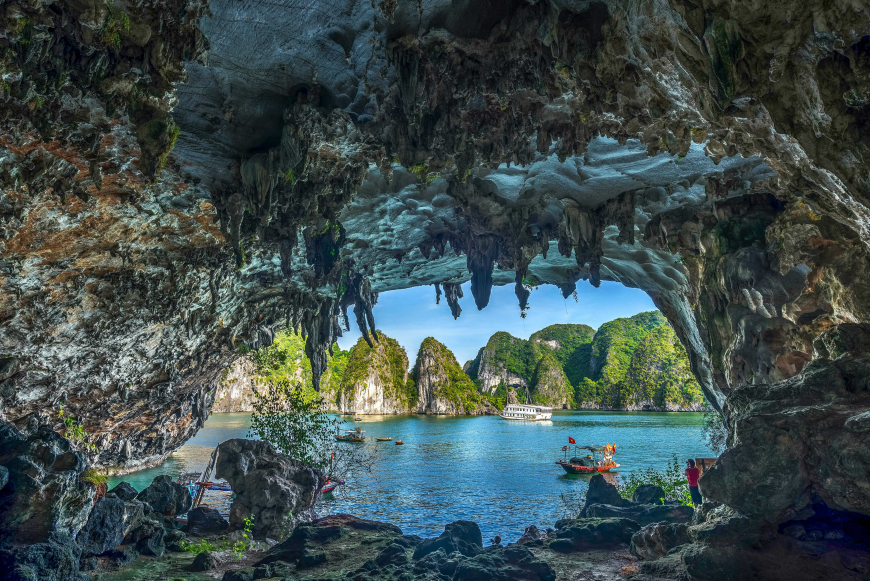At the 45th session of the World Heritage Committee on September 16, 2023 in Riyadh, Saudi Arabia, The United Nations Educational, Scientific, and Cultural Organization (UNESCO) announced the new inscription of Ha Long Bay - Cat Ba Archipelago to the list of World Natural Heritage.

Ha Long Bay
Cat Ba Archipelago in the northern port city of Hai Phong is the largest limestone archipelago of the country. It includes over 360 islands, including Cat Ba Island to the south of Ha Long Bay. Meanwhile, Ha Long Bay in Quang Ninh province was named by UNESCO as a World Heritage Site twice in 1994 and 2000. Being enlisted as a new World Natural Heritage Site, Ha Long Bay - Cat Ba Archipelago is Vietnam’s first inter-provincial UNESCO-listed world heritage site.
Ha Long Bay - Cat Ba Archipelago was added to the World Heritage List due to the beauty of its natural landscapes, including charming vegetation-covered limestone islands, breathtaking limestone islets, and impressive karst formations. Ha Long Bay - Cat Ba archipelago is considered a geological museum, containing heritage with outstanding global value, a place to witness typical changes in the earth's historical development as evidenced by the presence of primaeval forests, bays and islands.

Lan Ha Bay, Cat Ba archipelago
Ha Long Bay - Cat Ba archipelago cluster boasts a rich diversity of island and ocean ecosystems. It is home to various rare animals and plants, and houses the country’s largest maritime forest with an area of more than 17,000 hectares.
It is the habitat of 4,910 species of plants and animals on land and in the sea, of which 198 species are on the International Union for Conservation of Nature's Red List of Threatened Species, 51 endemic species. The primaeval forest area of about 1,045.2 ha on Cat Ba island is one of the important factors creating the ecological value and biodiversity of the heritage. In particular, the Cat Ba Langur (Trachypithecus poliocephalus) is a rare species, on the list of animals at highest risk of extinction. Up to now, there are about 60-70 individuals distributed only in Cat Ba. There are also an abundant of rare endemic plant species living under one roof on the limestone islands including cycas tropophylla, chirita drakei, livistona halongensis, impatiens verrucifera, schefflera alongensis, paphiopedilum concolor, euphorb, liliac, cycad, apocynin...
Ha Long Bay - Cat Ba Archipelago is a highly diverse area of Asia, possessing 7 adjacent tropical and subtropical marine - island ecosystems that develop successively. These include: primary tropical rainforest ecosystem; cave ecosystem; mangrove ecosystems; intertidal ecosystem; coral reef ecosystem; soft bottom ecosystem; saltwater lake ecosystem.
Before the new addition, Vietnam had eight world heritage sites recognised by UNESCO including:
- The Complex of Hue Monuments - World Cultural Heritage 1993;
- Ha Long Bay - World Natural Heritage 1994, 2000;
- My Son Sanctuary - World Cultural Heritage 1999;
- Hoi An Ancient Town - World Cultural Heritage 1999;
- Phong Nha - Ke Bang National Park - World Natural Heritage 2003, 2015;
- The Central Sector of the Imperial Citadel of Thang Long - Hanoi - World Cultural Heritage 2010;
- The Citadel of the Ho Dynasty - World Cultural Heritage 2011;
- Trang An Landscape Complex - World Mixed Natural and Cultural Heritage 2014.


